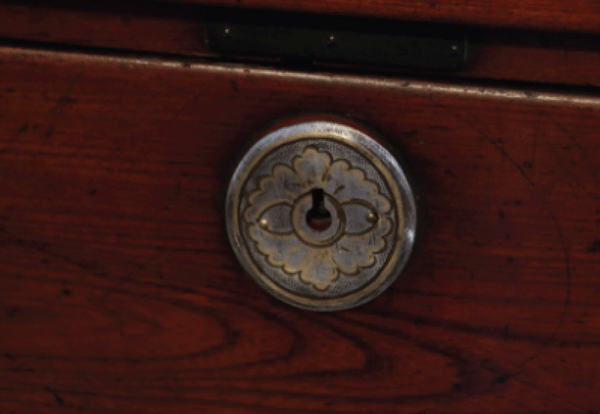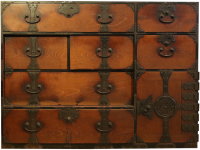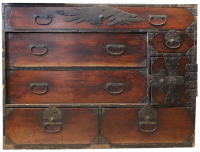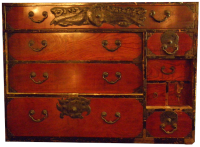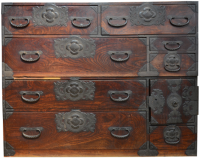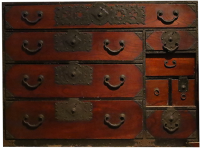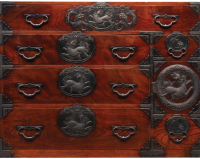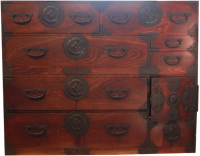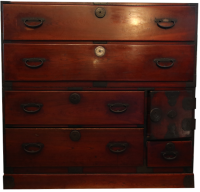The History of Sendai Tansu
What is Sendai Tansu?
Sendai Tansu (traditional Japanese chests) originated in the late Edo period. It was developed as a local craft by artisans living in the castle town of the Sendai Domain. Back then, it was called Yarō Tansu, a type of built-in chest designed to fit under a closet. It typically had a sword compartment on the upper level and a safe in the lower right section.
Crafted from woods such as zelkova, chestnut, and cedar, Sendai Tansu is known for its brilliant deep red finish created through a technique called Kijiro-nuri—a type of transparent lacquer that enhances the wood grain. The metal fittings are primarily made from iron, using a hammered technique and fixed with lacquer baking. These chests are large and open in form, not confined within a rigid frame, reflecting the bold and refined aesthetic of Date culture (a term used to describe the unique, flamboyant culture of the Sendai region).
From the mid-Meiji period onward, Sendai Tansu began to be exported overseas, incorporating elaborate designs such as peonies, dragons, and guardian lions (karajishi) to appeal to Western tastes. The result was a style of tansu unrivaled in beauty throughout Japan.
To this day, each piece of Sendai Tansu is handcrafted through a three-part process by specialized artisans: joinery, lacquering, and metalwork.
Crafted from woods such as zelkova, chestnut, and cedar, Sendai Tansu is known for its brilliant deep red finish created through a technique called Kijiro-nuri—a type of transparent lacquer that enhances the wood grain. The metal fittings are primarily made from iron, using a hammered technique and fixed with lacquer baking. These chests are large and open in form, not confined within a rigid frame, reflecting the bold and refined aesthetic of Date culture (a term used to describe the unique, flamboyant culture of the Sendai region).
From the mid-Meiji period onward, Sendai Tansu began to be exported overseas, incorporating elaborate designs such as peonies, dragons, and guardian lions (karajishi) to appeal to Western tastes. The result was a style of tansu unrivaled in beauty throughout Japan.
To this day, each piece of Sendai Tansu is handcrafted through a three-part process by specialized artisans: joinery, lacquering, and metalwork.
Legacy Designs of Metal Fittings

The creativity and craftsmanship of metalsmiths, inspired by traditional Japanese painters, have resulted in a variety of iron fittings that are visually stunning and functionally impressive.
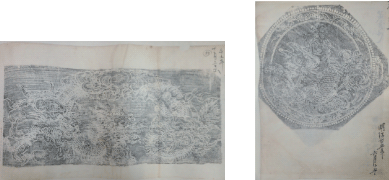
Many design sketches and impressions have been preserved to this day.


While tansu production in Sendai began in the late 18th century (Meiwa–Tenmei era), the distinctive features of Sendai Tansu likely emerged in the early 19th century (Bunka–Bunsei era). The earliest style is known as Flat Iron with Ivy Leaf and Bolt.
These four-foot-long tansu featured drawers already showing Sendai’s signature structure, although the central drawers used bolt-style locks due to limitations in metal fitting production at the time. The lock plates featured ivy leaf motifs, and the handles were simple curled types known as warabite. Examples of this style can be seen in the Sendai Tansu History & Craft Museum.
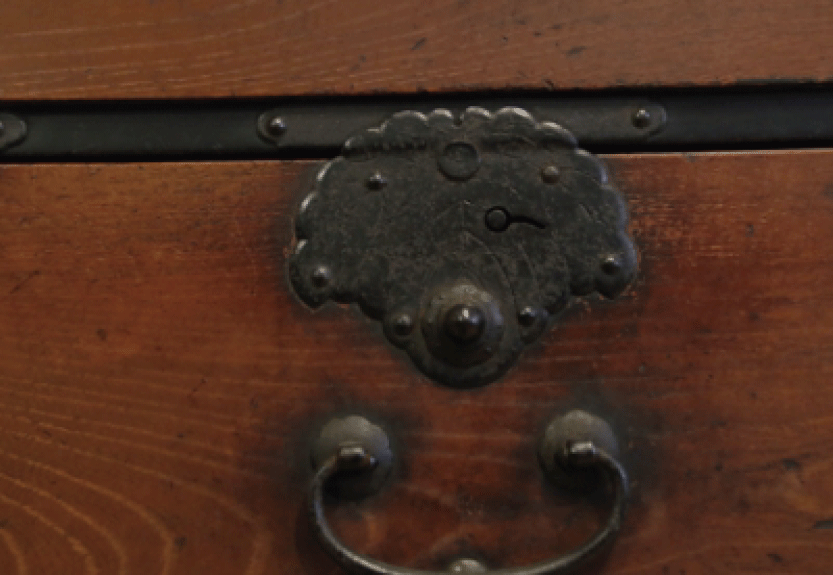
A variation of the first, this style features wide lock plates engraved with birds like phoenixes and cloud dragons, carved directly into flat iron without hammering. It still retains ivy leaf motifs and warabite handles.
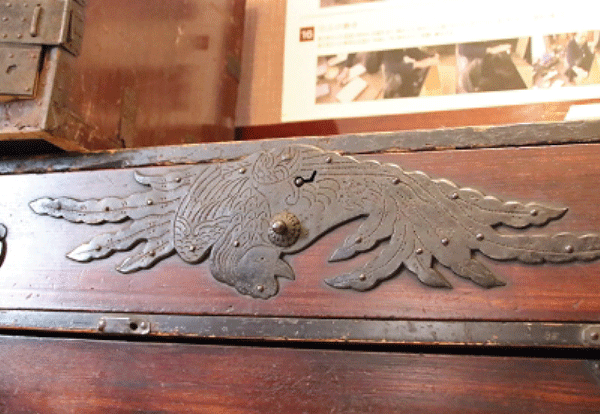
This version introduced hammered ironwork with crane motifs arranged in the shape of the kanji “小” (ko). The lock plates became more three-dimensional, and decorative fittings expanded to include chrysanthemum motifs and ornamented cabinet doors—marking the beginning of a more ornate style.
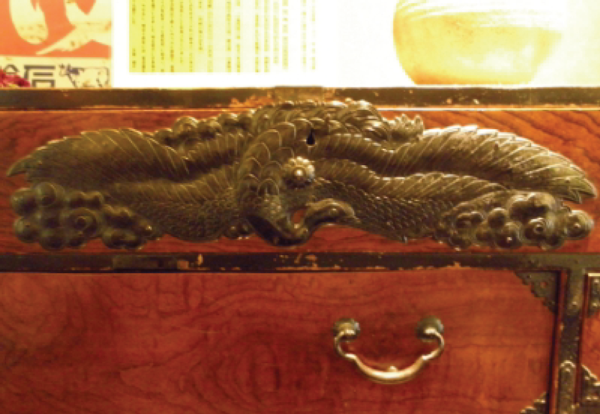
This transitional style saw the standardization of Sendai Tansu’s modern form. Some pieces retained bolt-style locks, while others featured lock plates on all drawers. Handle shapes evolved into melon-seed (mokko) styles. Lacquer techniques like Kijiro-nuri became more common, although mixed motifs sometimes led to visual imbalance.
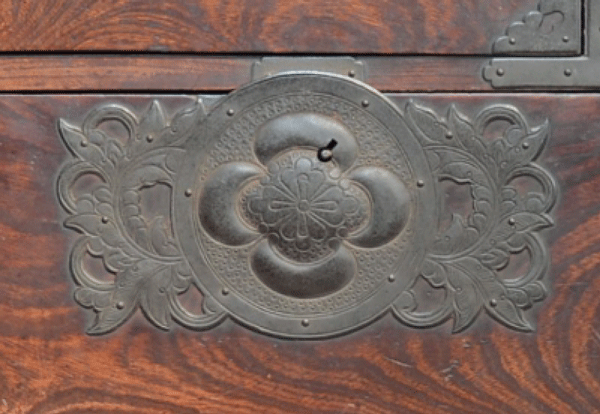
Considered the most elegant and well-balanced design, this style features lock plates on every drawer, with consistent motifs—round crest at center flanked by arabesques—paired with mokko handles and deep red Kijiro lacquer. This remains one of the most iconic forms today.

Originally developed for export, this style features lavish hammered iron fittings with auspicious motifs like peonies, Chinese guardian lions, and treasure symbols. These designs made their way back into domestic styles, ushering in the golden age of Sendai Tansu.
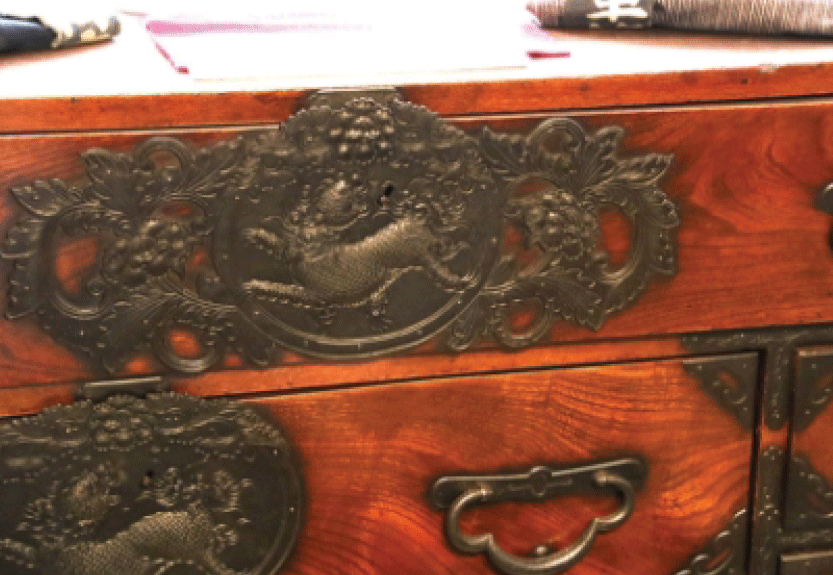
As tastes shifted toward Tokyo-style paulownia tansu, Sendai Tansu became a common choice for bridal furniture in rural households. This simpler type featured three chrysanthemum-shaped plates arranged on large drawer locks, but overall quality declined.

Influenced by Tokyo trends, these vertical stackable tansu used zelkova wood but adopted simpler wipe-lacquer finishes and minimalist fittings. These pieces mark the final major stylistic evolution of traditional Sendai Tansu.
